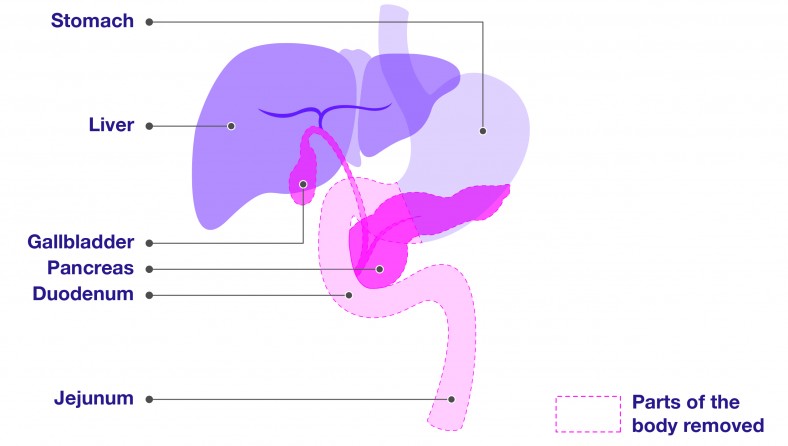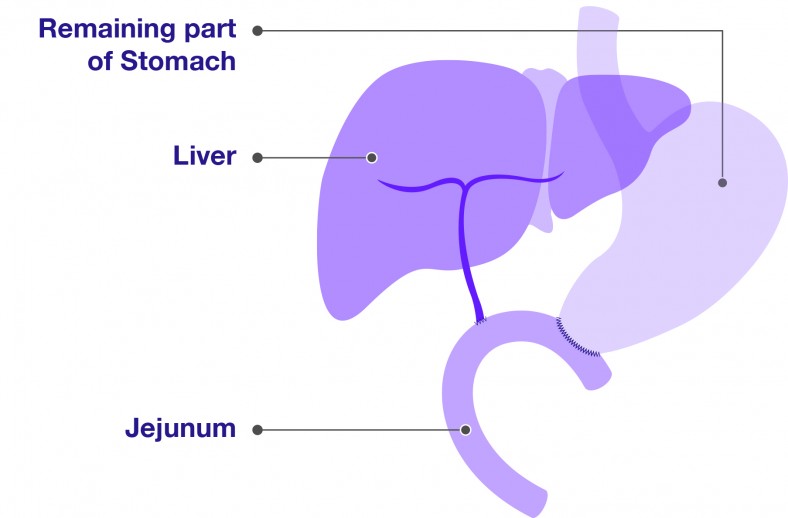Total pancreatectomy
A total pancreatectomy is a major surgery that involves the removal of the whole pancreas as well as your duodenum, part of the stomach, the gallbladder, part of your bile duct, the spleen, and many of the surrounding lymph nodes.
This operation is not often carried out as it has not been found to be any more effective for survival than either the Whipple’s procedure or the Pylorus Preserving Pancreatoduodenectomy (‘PPPD’) procedure.
There are some conditions for which it is used;
- When tumours are found in more than one location in the pancreas
- When the tumour extends along the pancreatic duct
- Sometimes when there is a rare or specific type of pancreatic tumour. This includes pre-cancerous IPMNs (intraductal papillary mucinous neoplasms). An IPMN is when abnormal growth of cells in ducts within the pancreas. As the abnormal cells grow they secrete a thick fluid called mucin leading to the formation of a cyst. Some IPMNs have a higher risk of developing into cancer e.g. those arising from the main pancreatic duct (main duct IPMN). However most IPMN’s are a type called branch IPMN’s which are often benign and able to be observed rather then actively treated.
- When it is extremely risky or impossible to join the pancreas either to the intestine or
stomach.
Total Pancreatectomy (before):

Total pancreatectomy (after):

 The information provided in this site, or through links to other websites, is not a substitute for medical or professional care and should not be relied upon as such. Read our disclaimer.
The information provided in this site, or through links to other websites, is not a substitute for medical or professional care and should not be relied upon as such. Read our disclaimer.
Sources and references for this information product will be supplied on request. Please contact us quoting the Information Product number below:
| Information Product № | Published | 15/10/2019 | |
|---|---|---|---|
| Last Updated | 07/09/2022 | Next Review Due | 02/09/2022 |